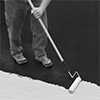Filter by
Container Type
For Use On
Color
Formulation
Maximum Temperature
Material
Container Size
For Joining
Minimum Temperature
Hardness Rating
Performance
Thickness
For Use With
Clarity
DFARS Specialty Metals
Facility and Grounds Maintenance
Electrical
Sealing
Fastening and Joining
Heating, Ventilation, and Air Conditioning
Safety Equipment











































